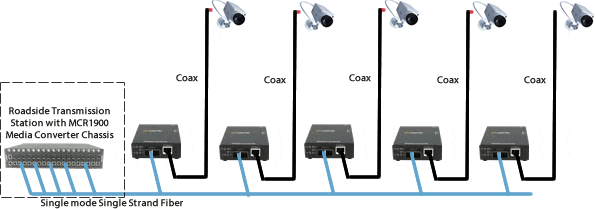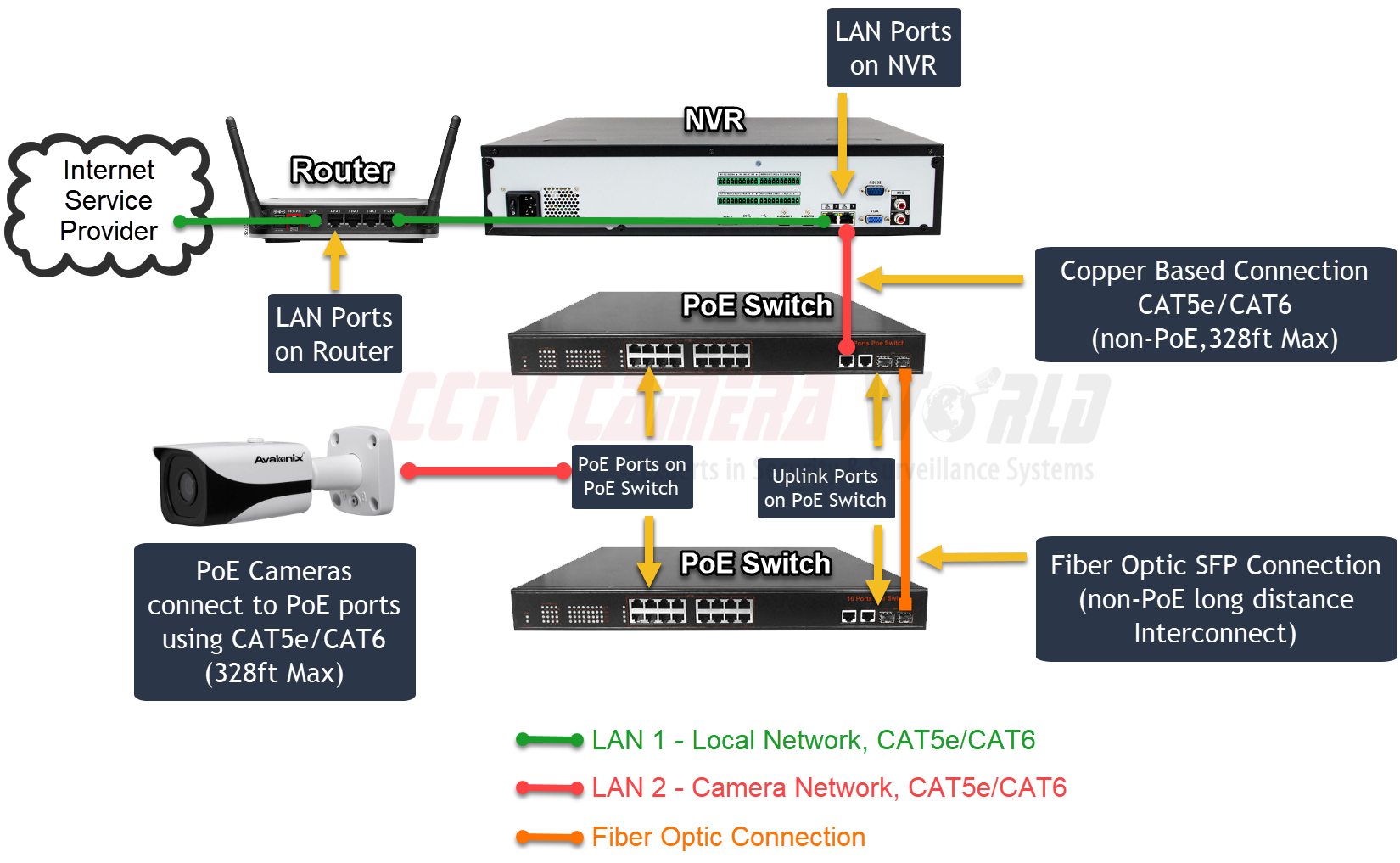Improve Your Surveillance Network with a CCTV Camera Featuring Fiber Optic Output for Enhanced Monitoring
Improve Your Surveillance Network with a CCTV Camera Featuring Fiber Optic Output for Enhanced Monitoring
Blog Article
How CCTV Cameras With Fiber Optic Result Enhance Long-Distance Surveillance
CCTV video cameras outfitted with fiber optic output represent a substantial innovation in long-distance surveillance modern technology, supplying unrivaled benefits over conventional systems. By leveraging the residential or commercial properties of light transmission via fiber optics, these cameras make sure high-def video clip quality stays undamaged throughout substantial ranges while successfully minimizing electro-magnetic interference - cctv fibre optic cable.

Understanding Fiber Optic Innovation
Fiber optic innovation is increasingly used in long-distance surveillance applications due to its extraordinary capacity for information transmission. This modern technology uses slim strands of glass or plastic fibers to transfer data as light signals, considerably decreasing the attenuation typically connected with conventional copper cable televisions. The fundamental residential properties of optical fiber permit the transmission of big quantities of data over considerable distances without loss of quality, making it a perfect selection for applications needing trustworthy communication.
The concept of complete interior reflection assists in the efficient transmission of light within the fiber, ensuring high bandwidth and speed. Unlike electric signals in steel cords, fiber optics are immune to electro-magnetic disturbance, improving the integrity of information transmission. This particular is especially important in environments with high degrees of electrical noise, such as commercial setups or metropolitan areas.
Additionally, fiber optic wires are lighter and extra versatile than their copper counterparts, which simplifies setup and lowers architectural load. With their longevity and resistance to environmental factors, optical fiber are well-suited for outside applications, therefore prolonging the reach of monitoring systems. Therefore, fiber optic technology is coming to be a foundation in contemporary security services, successfully addressing the difficulties of long-distance tracking.
Advantages of Fiber Optic CCTV
Making use of fiber optic technology in CCTV systems uses countless benefits that boost surveillance abilities. Among the primary benefits is the capability to send high-definition video clip over fars away without significant signal deterioration. Unlike traditional copper cords, fiber optics can preserve video clip top quality over extensive runs, making them suitable for large properties or remote monitoring places.
Furthermore, fiber optic wires are less vulnerable to electromagnetic disturbance, which can misshape signals in standard systems. This makes certain clearer images and uninterrupted service, vital for safety tracking. Fiber optics are inherently much more protected, as intercepting signals calls for specific devices, thus providing an added layer of protection versus unapproved gain access to.
The light-weight and compact nature of fiber optic cables additionally streamlines setup, making it possible for easier transmitting via limited rooms and lowering total labor prices. Their longevity makes them immune to environmental elements such as moisture and temperature variations, expanding the life expectancy of the surveillance system.
Finally, fiber optic systems can support a majority of electronic cameras on a solitary network, optimizing resources and offering scalability for future expansion. These advantages make fiber optic CCTV systems a premium option for contemporary monitoring needs.
Contrast With Typical Solutions
When comparing CCTV systems, typical configurations often fall brief in discover here several essential locations, particularly in terms of range and signal honesty. Traditional coaxial cable systems commonly face considerable signal degradation over fars away, limiting Continued reliable monitoring varies to roughly 300 feet (cctv fibre optic cable). Yet threshold, photo quality decreases, bring about prospective blind spots and minimized security efficiency
On the other hand, fiber optic systems preserve signal stability over a lot greater ranges, typically surpassing numerous miles without loss of quality. This is mainly due to their capability to send data as light signals, which are less prone to electro-magnetic interference than electrical signals utilized in typical systems.
In addition, typical systems require a lot more extensive maintenance and troubleshooting as a result of their vulnerability to environmental elements such as moisture and electromagnetic noise. Fiber optic systems, alternatively, deal improved longevity and reduced maintenance costs, as they are much less susceptible to damage.
Applications in Long-Distance Surveillance
The advantages of modern CCTV systems in keeping signal stability over lengthy distances open a vast array of applications for long-distance monitoring. One significant application remains in metropolitan surveillance, where districts deploy fiber optic CCTV systems to monitor public rooms, enhancing safety and security and preventing criminal activity. These systems provide continual, high-quality video clip feeds that are critical for reliable police and emergency situation feedback.
An additional vital application remains in industrial setups, where remote tracking of manufacturing processes and harmful locations is important. Fiber optic CCTV can withstand extreme environments and transmit information over cross countries without loss of quality, permitting real-time oversight and lessening risks to personnel.
Additionally, vital infrastructure such as airports, railways, and pipes gain from long-distance CCTV surveillance. Safety groups can supervise huge areas from streamlined control rooms, making sure rapid response to any type of incidents.
Furthermore, in agricultural settings, farmers use long-distance CCTV to monitor crops and animals, assisting to improve performance and protection. In general, the adaptability and integrity of fiber optic CCTV systems make them essential throughout Web Site numerous sectors, allowing detailed security solutions tailored to particular requirements.
Future Fads in Security Modern Technology
Just how will innovations in modern technology improve the landscape of monitoring? The future of monitoring technology is poised for substantial makeover, driven by technologies such as expert system (AI), artificial intelligence, and side computer. These technologies make it possible for real-time data evaluation, permitting quick identification of prospective risks and enhanced situational awareness.
AI-powered analytics will boost the accuracy of facial recognition systems, reducing incorrect positives and making it possible for much more reliable tracking of people. Moreover, the integration of Net of Points (IoT) devices will certainly assist in a seamless network of interconnected surveillance systems, boosting monitoring abilities throughout large locations.
An additional pattern is the change in the direction of cloud-based storage remedies, which offer scalable data monitoring and ease of access. This will certainly permit organizations to save large amounts of video clip data without the restrictions of physical storage space, while guaranteeing that details is conveniently retrievable.

Conclusion
In verdict, CCTV cameras outfitted with fiber optic result represent a substantial development in long-distance monitoring capacities. As monitoring innovation proceeds to progress, the adoption of fiber optic solutions will likely play a crucial function in enhancing protection throughout varied applications.
Report this page